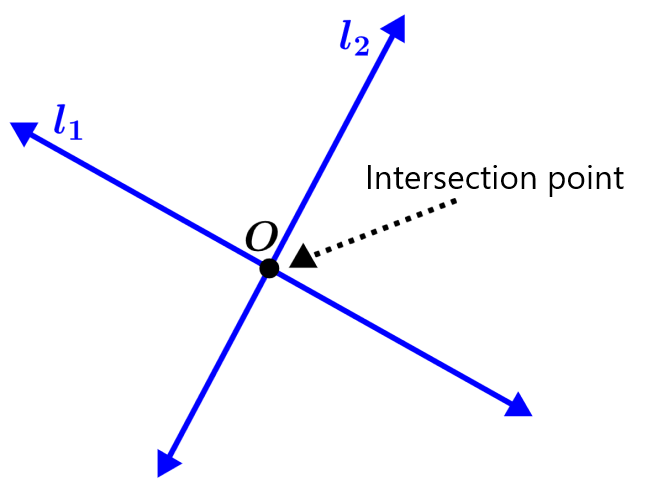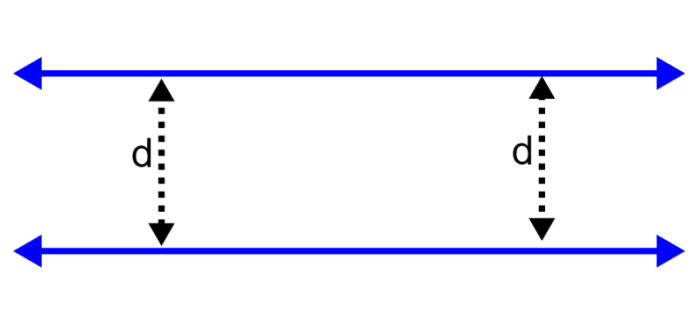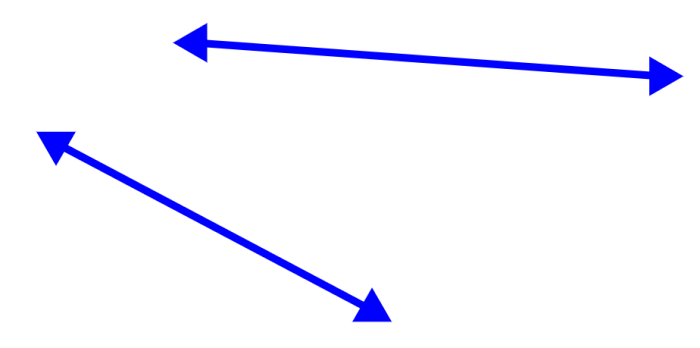Intersecting lines are formed when two or more lines share one or more points of intersection. For the lines to intersect, they must have different slopes and be non-parallel. When two lines intersect, two pairs of opposite vertical angles are formed.
Here, we will learn more details about the intersections of lines.
GEOMETRY

Relevant for…
Learning about the properties of intersecting lines with examples.
GEOMETRY

Relevant for…
Learning about the properties of intersecting lines with examples.
What are intersecting lines?
Line intersections happen when two or more lines meet at a common point. The point at which the lines intersect is known as the point of intersection. The following diagram is an example of line intersections. The lines $latex l_{1}$ and $latex l_{2}$ intersect at point O.

When we have three or more lines, the lines can share more than one point of intersection as shown in the following diagram.

Properties of intersecting lines
The following are some of the most important properties of line intersections:
- Two intersecting lines meet at a single point called the point of intersection.
- Three or more intersecting lines can meet at more than one point.
- Intersecting lines meet each other at any angle, which is greater than 0° and less than 180°.
- Two intersecting lines form opposite vertical angles.
What are non-intersecting lines?
When two or more lines do not cross each other, they are called non-intersecting lines. All lines will intersect if they are extended long enough. The only exception to this are parallel lines, which do not intersect no matter how long they are extended.
If we want two lines without intersections, we have to make sure that the lines are parallel, that is, they must always maintain the same distance from each other no matter how much we extend them.

Properties of non-intersecting lines
We can identify lines without intersections by considering that they have the following properties:
- Non-intersecting lines never intersect each other and do not have any intersection points.
- These lines are equidistant, that is, they always keep the same distance from each other.
- Non-intersecting lines have the same slope.
Solved examples of intersecting lines
The following examples are some applications of line intersections.
EXAMPLE 1
Are the following lines intersecting lines or straight non-intersecting lines?

Solution: The lines have directions, which means that they extend indefinitely to both sides. If we extend them enough, we can see that they would intersect since they have different inclinations. Therefore, the lines are intersecting.
EXAMPLE 2
What are some examples of intersecting lines in real life?
Solution: The following are examples of intersecting lines:
Crossroads: When two straight roads meet, they form an intersection of lines.
Scissors: Scissors have two sides, which form an intersection of lines.
Railroad rails: When there are multiple railroad tracks, the rails intersect and form intersecting lines.
EXAMPLE 3
Which of the following statements are true and which are false?
- Two intersecting lines form two pairs of vertical angles.
- Three intersecting lines can share an intersection point.
- Two intersecting lines form four pairs of vertical angles.
- Three intersecting lines cannot share four common points of intersection.
Solution: We have the following:
1. Two intersecting lines form four angles. Each pair of angles opposite each other are vertical. Thus, this is true.
2. Three intersecting lines can share a single point of intersection. Thus, this is true.
3. Two intersecting lines form four angles, but only two pairs of vertical angles. Thus, this is false.
4. Three intersecting lines can share a maximum of three intersection points. Thus, this is true.
See also
Interested in learning more about perpendicular and parallel lines? Take a look at these pages:



